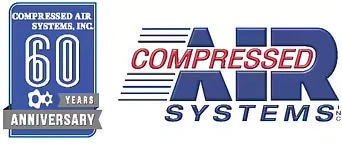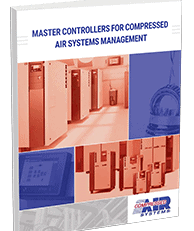Why Air Receiver Tanks Are Essential for Your Compressed Air System
Air receiver tanks, also called compressed air tanks or simply air receivers, are crucial elements of compressed air systems. Air receiver tanks have two main purposes: to serve as short-term storage units during temporary demand spikes, and to help systems perform more efficiently overall.
To think of it another way, air receiver tanks perform much like batteries: By utilizing stored energy, a lower-horsepower machine can be employed to complete a larger task. Because of the massive amount of pressure these tanks are often under — not to mention their vital importance in compressed air systems — they must be both durable and strong.
There are two kinds of air receivers: wet and dry. Wet receivers are placed immediately after the compressor.
In addition to serving as storage tanks, these receivers also help reduce moisture. Dry receivers, on the other hand, are placed after the air dryer or other air preparation equipment, and can minimize drops in the air pressure of a compressor system.
1. Integrating Air Receiver Tanks Into Your Facility
Typically, an air receiver tank is sized at six to 10 times the flow rate of the compressed air system. By law, tanks must have a pressure relief valve and a pressure gauge. The relief valve is typically set to 10% higher than the working pressure of the system.
Also, it’s crucial to have either a manual drain or an automatic drain on the receiver tank so water can be easily removed from the system.
The removal of moisture is especially important in cold weather, as moisture can accumulate and reenter the flow of outgoing air. Plus, if the temperature falls below 32 °F, the condensate line will freeze, potentially damaging the pipe.
Moisture can also cause rust and scale to form on the inside of the tank, both of which can be carried in the outgoing air and cause premature blockages of filters. A coalescing filter and air dryer usually are placed downstream of the receiver tank.
Air compressors — typically smaller-range ones — may be “tank-mounted” on top of an air receiver. Space-constrained plants usually opt for this arrangement. However, this won’t work for most larger compressors, as they’re much more top-heavy and would pose a danger.
2. The Importance of Air Receiver Tanks
In addition to storing energy and optimizing the efficiency of compressed air systems, air receiver tanks perform several other important duties.
First, they help regulate compressor controls to prevent short cycling and over pressurization. Failing to install a receiver — or using one that’s too small — will cause a compressor to rapid cycle, which can cause a range of different issues.
Next, an air receiver tank also serves as a second heat exchanger. As air passes through it, the air temperature drops about 10° below what it was after cooling via the first heat exchanger.
Air receiver tanks also precipitate some of the moisture and oil carryover that may be present in the compressed air as it leaves the compressor or is carried over from the after-cooler.
And finally, these versatile tanks help reduce the dew point and temperature spikes that can occur after regeneration.
Learn More
Air receiver tanks serve a critical role in compressed air systems across a range of different industries. In fact, not using one can be downright dangerous.
Need help selecting an air receiver tank for your specific application needs? Reach out to the team at Compressed Air Systems (CAS) today to request a quote and discuss your options with an expert.








